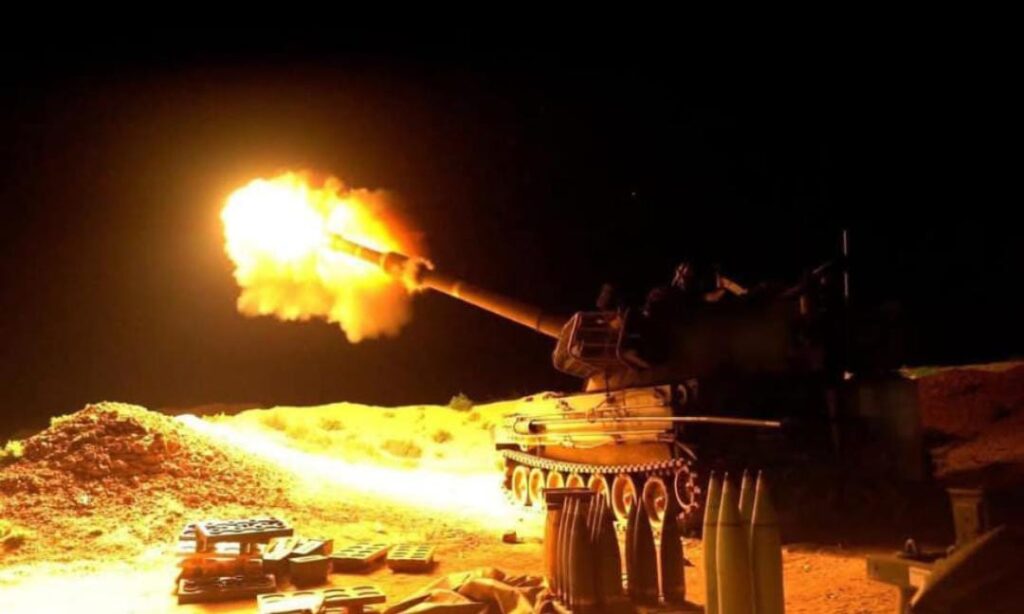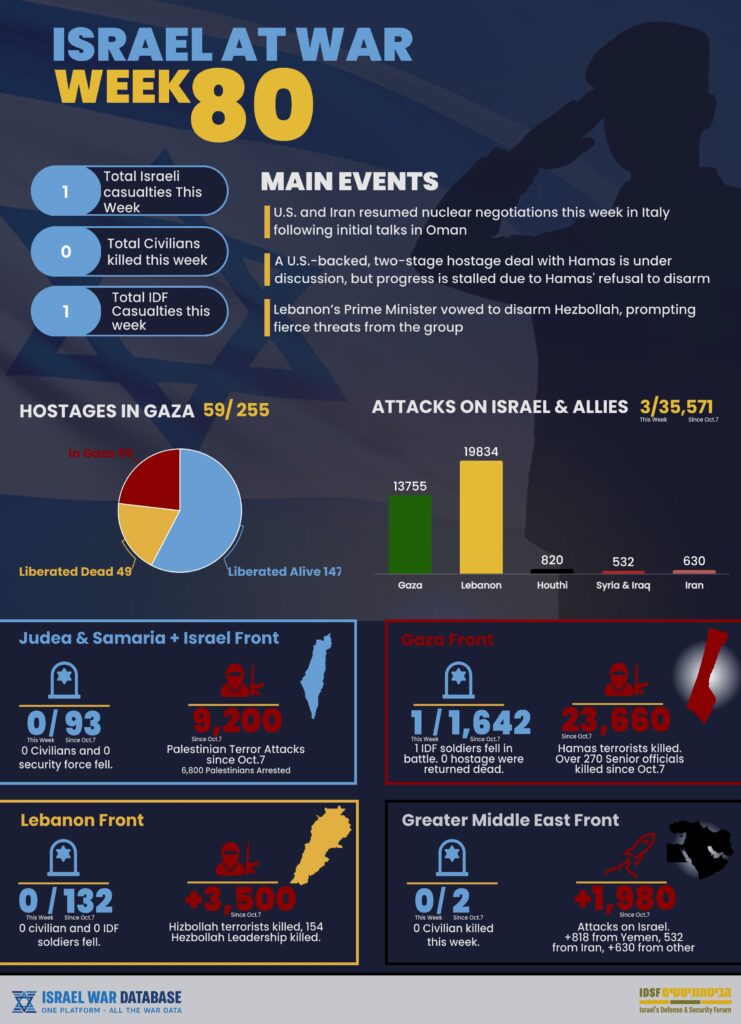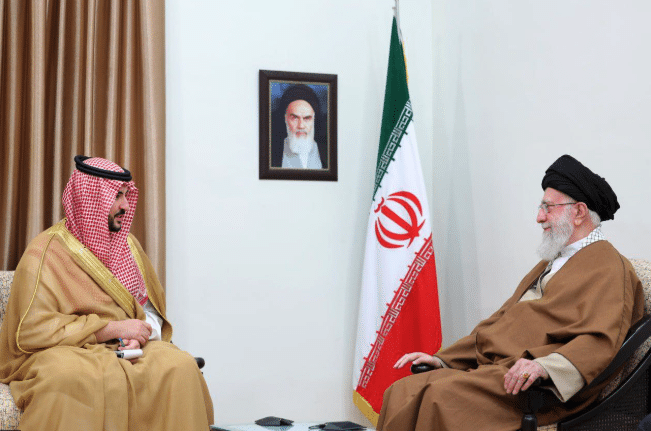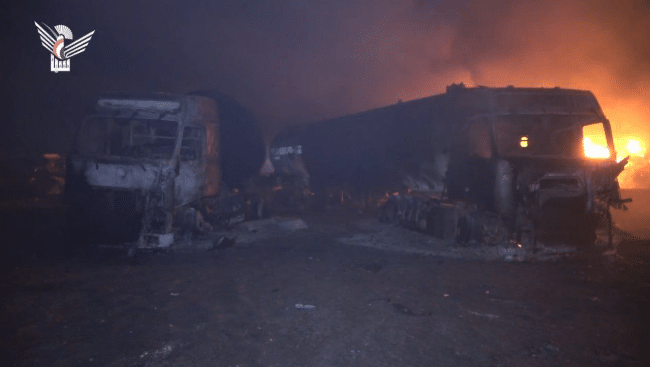
Overview
- U.S. and Iran resumed nuclear negotiations this week in Italy following initial talks in Oman, while Israeli plans for a military strike were reportedly blocked by Washington in an effort to give diplomacy one last chance.
- A U.S.-backed, two-stage hostage deal with Hamas is under discussion, but progress is stalled due to Hamas’ refusal to disarm and insistence on retaining control over Gaza post-war—terms Israel categorically rejects.
- The IDF has escalated its Gaza campaign, combining targeted assassinations, widespread airstrikes, and expanded ground maneuvers, with 30% of the Strip now designated as an Israeli security zone.
- Lebanon’s Prime Minister vowed to disarm Hezbollah, prompting fierce threats from the group, which warned of retaliation against any move to dismantle its military infrastructure.
- The United States has begun a phased withdrawal of forces from Syria, triggering strategic repositioning by Israel, Turkey, and Iranian proxy groups amid fears of renewed instability.
- In one of its most significant strikes, the U.S. bombed a key Houthi fuel terminal in Yemen, destroying infrastructure used to support missile attacks and resulting in dozens of casualties.
- Palestinian Authority President Mahmoud Abbas met with Syria’s new president, Abu Mohammad al-Julani, while Iranian proxies condemned normalization efforts and pledged continued resistance against Israel and Western influence.
- From Lebanon to Yemen, the region faces rising geopolitical tension as alliances shift, proxy forces mobilize, and Israel maintains its offensive against terrorist infrastructure across multiple fronts.

Gaza
The Hostage Deal – A Fragile Framework
In Cairo, negotiations resumed over a two-stage proposal aimed at securing the release of Israeli hostages in exchange for Palestinian prisoners. The plan, heavily influenced by U.S. and Egyptian mediation, outlines a structured timeline for phased implementation:
- Day 1: American-Israeli hostage Idan Alexander would be released as a goodwill gesture to the United States.
- Day 2: Five hostages to be freed in return for 66 Palestinian prisoners serving life sentences and 611 detainees from Gaza.
- Day 7: An additional four hostages would be exchanged for 54 more life-term prisoners and 500 detainees.
- Day 10: A mutual exchange of information on all remaining hostages and prisoners.
- Day 20: Hamas would return 16 deceased hostages in exchange for 160 Palestinian bodies held by Israel.
The deal includes a 45-day ceasefire and provisions for humanitarian aid, shelter infrastructure, and a reconfiguration of IDF deployment in Gaza. On Day 3, talks would begin on Gaza’s future, focusing on demilitarization and a permanent ceasefire.
However, Hamas has firmly rejected any demand to disarm, offering instead a comprehensive release deal that includes full Israeli withdrawal and the start of Gaza’s reconstruction—conditions that Israel refuses to accept and cannot accept in order to achieve its war goals of ensuring Gaza will no longer pose a threat to Israel. Leaving Hamas in power will only ensure another war in the future. Hama’s refusal to disarm and abandon its wish to continue its authoritarian rule over Gaza is stalling the end to the war and making any hostage deal implausible.

Operational Developments – IDF Pressure Campaign
The IDF intensified its efforts on multiple fronts as part of Operation “Might and Sword”, targeting Hamas’ military and leadership infrastructure with significant impact:
Targeted Eliminations
Among the high-profile militants killed:
- Obaidallah Mousa: Deputy commander of Hamas’ sniper unit
- Hamza Asefa: Key participant in the October 7th massacre
- Mahmoud Abu Hasira: Aide to Hamas’ Gaza Brigade commander
- Yahya Abu Shaar: Responsible for weapons smuggling, Mohammed Al-Ajla: Commander of the Sajaiya Battalion
- Hassan Abu Hassira: Right-hand man to senior commander Izz ad-Din al-Haddad
Air Operations
Over 1,300 targets struck across Gaza in recent days. Use of 350+ aircraft and UAVs. 100+ precision eliminations, including 11 senior leaders and 5 battalion commanders. Destruction of tunnel networks, command centers, and weapons sites. Airstrikes foiled two Hamas squads preparing mortar and IED attacks
Ground Operations
Expansion of the Morg Axis to sever coordination between the Rafah and Khan Yunis brigades. 30% of Gaza is now designated as a security zone under IDF control
Public Dissent and Hamas’ Struggles
In Beit Lahia, a protest originally meant to support Hamas turned into a spontaneous anti-Hamas demonstration, with locals chanting “Hamas out!” and waving Egyptian flags. Hamas’ attempt to co-opt the event ended in confrontation.
Meanwhile, internal economic distress is evident: Hamas is reportedly unable to pay its fighters, adding to operational strain.
Strategic Analysis – A Turning Point
Israel is applying multi-dimensional pressure on Hamas—military, political, and psychological—to force a breakthrough on the hostage front while systematically dismantling the group’s military capabilities. The IDF Objectives include: Decapitate Hamas’ command structure. Destroy critical infrastructure both above and below ground. Expand territorial control to prevent Hamas reconstitution
Hamas’ position is deteriorating with the loss of seasoned commanders and weakened battlefield leadership. Civilian dissent is emerging as public trust erodes and economic and logistical challenges threaten internal cohesion
Geopolitical Dynamics
While the U.S., Egypt, and Qatar continue to push for a lasting ceasefire, Israel remains skeptical of Hamas’ long-term intentions. Defense Minister Yisrael Katz has emphasized that areas cleared by the IDF will not be relinquished but used to dismantle Hamas infrastructure permanently.
Hamas, for its part, clings to maximalist demands, rejecting demilitarization and accusing Netanyahu of exploiting negotiations for political cover.
The war in Gaza is entering a decisive phase. Unless Hamas agrees to substantive terms, including hostage releases and disarmament, Israel is poised to escalate its operations further—both in scope and intensity—aimed at dismantling Hamas as a governing and military entity.

U.S.–Iran Nuclear Talks
The United States and Iran are once again circling the edges of diplomacy, with renewed nuclear negotiations beginning in Oman and a second round already slated for Rome. It isn’t clear if there were direct negotiations or not.
Shortly after the first round, Iran’s Supreme Leader Ali Khamenei took the stage with defiant rhetoric. “Iran’s progress has angered our enemies,” he said, framing the talks as a battle between independence and foreign domination. While acknowledging economic woes, Khamenei insisted Iran’s rapid scientific and military advancements—even recognized by its enemies—must not be overlooked.
Meanwhile in Washington, U.S. Defense Secretary Pete Hegseth struck a firm tone, warning that if diplomacy fails, the U.S. would “strike hard” to prevent a nuclear-armed Iran. Donald Trump also echoed that line: “They’re close to the bomb. If they get it, we will use force—for the world, not just America.”
A report in The New York Times revealed that the Trump administration recently blocked a planned Israeli commando raid and airstrikes on Iranian nuclear sites, preferring to give diplomacy one more shot. Trump responded: “I didn’t stop it—I’m just not rushing in. Iran still has a chance to choose peace.”
Within Trump’s cabinet, there appears to be a divide over how best to approach Iran. Some advisers argue that Iran’s willingness to engage in talks necessitates a diplomatic response, warning that any U.S. or Israeli strike following Tehran’s outreach could damage America’s global standing. Others caution that the military option isn’t fully prepared and could ignite a broader regional conflict with unpredictable consequences. Still, there are voices within the administration advocating for a more immediate and forceful military approach.
In Israel, there is deep concern that the emerging framework could mirror the 2015 JCPOA agreement under President Obama—a deal many in Jerusalem believe merely delayed, rather than dismantled, Iran’s nuclear ambitions. For now, Israel is opting to avoid a direct clash with Trump and appears willing to let negotiations play out. Behind the scenes, however, preparations for a potential military strike on Iran continue.
At the heart of the deadlock lies a familiar issue: uranium stockpiles. Washington wants Tehran to transfer enriched uranium to a third country, likely Russia. Iran says no. Its reasoning? A fear of being burned again, as it was in 2018 when the U.S. exited the nuclear deal. “We won’t tie national interests to American promises,” said Iranian officials, insisting their right to enrich uranium is not up for negotiation.
As tensions rose, IAEA chief Rafael Grossi visited Iran, warning the world that Tehran is “not far from a bomb.” During his visit, he was given a tour of Iran’s nuclear advancements—from fusion research to quantum technology—meant to showcase progress, but also possibly to send a message.
In Moscow, Iran’s Foreign Minister AbbasAraghchi met with his Russian counterpart Sergey Lavrov, declaring a new high point in Iran–Russia relations and inviting Russian involvement in the talks. “We believe an agreement is possible,” he said.
Yet beneath the diplomatic rituals, the standoff remains unchanged: Iran demands recognition and autonomy; the U.S. demands restrictions and guarantees. The next meeting in Rome may be a crossroads—for diplomacy, or escalation.
Domestic Israel
The U.S. approved a $180 million deal to supply engines and components for Israel’s “Eitan” armored personnel carriers, expanding a previous agreement. The package includes logistical and technical support, with Rolls-Royce America as the lead contractor.
Diplomatic
In diplomatic developments, Israeli Foreign Minister Gideon Sa’ar met with UK Foreign Secretary David Lammy in London to discuss regional issues, focusing on Iran’s nuclear program, the hostage negotiations in Gaza, and bilateral cooperation. Meanwhile, Prime Minister Netanyahu told French President Emmanuel Macron he opposes a Palestinian state, calling it a “reward for terror” and warning it would become an Iranian stronghold near Israeli cities. He noted the Palestinian Authority has yet to condemn the October 7 attacks, and emphasized that most Israelis reject the idea of statehood.
Domestically, two teenagers—a Palestinian and an Israeli—were indicted for allegedly plotting an ISIS-inspired attack on a synagogue in Lod. The Israeli suspect reportedly contacted ISIS online, planned to steal a guard’s weapon, and open fire. The Palestinian accomplice was to distract the guard during the assault.
At a press conference in Jerusalem, U.S. Ambassador Mike Huckabee underscored the strength of U.S.-Israel ties. He affirmed that former President Trump is committed to the release of hostages and said Trump had “never been a better president for Israel.” Huckabee also stressed that Iran will never be allowed to obtain nuclear weapons, as it poses a threat to both Israel and the U.S.
Judea & Samaria
In southern Hebron, a 30-year-old Israeli was moderately injured in a vehicular ramming near Otniel. The attacker fled toward Dahariya, and a manhunt is underway.
Operational
In northern Samaria, Israeli forces eliminated two armed militants near Misliya, south of Jenin. One was Mohammed Zakarna, a Palestinian Islamic Jihad member who took part in the January 2025 Funduq attack, where three Israelis were killed. The final member of that cell was found hiding in a tunnel with two others and was killed after a firefight. In nearby Burqin, the IDF demolished the home of a terrorist involved in a June 2024 attack that killed one soldier and wounded 16 others.
In Jordan, authorities arrested 16 terrorists plotting to destabilize the kingdom under Iranian guidance, possessing rockets, explosives, and drones, including TNT.
Diplomatic
Palestinian Authority President Mahmoud Abbas spoke with French President Emmanuel Macron, discussing the prevention of Palestinian displacement. Macron reiterated France’s commitment to a ceasefire, hostage release, and humanitarian access. He also emphasized a post-war framework that includes disarming Hamas, reforming the Palestinian Authority, and advancing a two-state solution.

Lebanon
Lebanese President Joseph Aoun revealed that the army uncovered tunnels and weapons caches both north and south of the Litani River, declaring readiness to control the southern border—while blaming limited deployment on Israel’s continued occupation of five points. He stressed that disarming Hezbollah must be done through dialogue, not force. Parliament Speaker Nabih Berri and the Amal movement signaled support for placing all weapons under state control by 2025. Beirut’s governor ordered the removal of all political and sectarian posters, including Hezbollah imagery, aiming to depoliticize the capital.
Hezbollah, however, rejected any discussion of disarmament. Senior official Mahmoud Qamati cited Nasrallah’s warning: “The hand that reaches for our weapons will be cut off.” Wafiq Safa later reinforced that no force could disarm the group, asserting that national defense discussions would only begin after Israel withdraws and halts attacks. Hezbollah continues to exert influence over military appointments in Lebanon.
Operational
Meanwhile, the IDF conducted several targeted strikes in southern Lebanon, eliminating key Hezbollah figures, including leaders in the Radwan Force and Operations Division. European security services have dismantled a Hezbollah network smuggling drone components into Lebanon, with suspects arrested in Spain, Germany, France, and the UK. Lebanese sources also reported the relocation of families of 400 senior Hezbollah operatives to Latin America and Africa, hinting at growing concern within the group’s leadership.
Together, these developments signal increased international and domestic pressure on Hezbollah amid a shifting Lebanese political landscape.

Global Jihad
In a recent editorial, ISIS portrays President Trump’s proposed global tariff policies as a catalyst for the collapse of the Western economy. Labeling the tariffs as a “nuclear bomb,” the group argues that targeting allies like Europe alongside rivals like China will backfire, triggering retaliatory trade wars that fracture Western unity and economic stability.
ISIS predicts the resulting global recession will spark mass unemployment, poverty, and social disintegration across the West. They liken the expected collapse to the chaos seen during COVID-19, anticipating a surge in crime and social breakdown.
Beyond criticism, the editorial serves as jihadist propaganda. It urges Muslims to abandon Western financial systems based on interest and fiat currencies, advocating instead for an Islamic economy grounded in gold and charity. ISIS also calls for increased support of jihadist movements, presenting them as the divine instrument to destroy “infidel regimes.”
The group sees this unfolding crisis as both divine punishment and a strategic opening. Even if the U.S. collapses, they warn, Muslims must remain vigilant as a new hostile force may rise in its place. Ultimately, ISIS frames the global economic rifts as a victory for jihad and a validation of their worldview.
Yemen – Houthim
Houthi Attacks on Israel and Regional Threats
The Houthi rebel group in Yemen claimed responsibility for launching two missiles and a drone toward Israel. Houthi military spokesperson Yahya Saree stated the targets included “vital sites,” specifically Ben Gurion Airport and an Israeli military base. None of the missiles hit their targets and were shot down by the Israeli Airforce
U.S. Strikes Houthi Fuel Terminal, Dozens Killed
Yemeni media reported at least 38 killed and over 100 wounded in U.S. airstrikes targeting the Ras Issa fuel terminal in Houthi-controlled Hudaydah Province.
Key points:
- 14 strikes were launched in two waves. The second wave reportedly hit after rescue forces arrived, resulting in at least five rescuers killed.
- Significant infrastructure damage occurred, including the destruction of multiple fuel tankers, allegedly with drivers still inside.
U.S. Sanctions on Yemeni Bank
In parallel to the airstrikes, the U.S. Treasury Department imposed sanctions on Yemen’s International Bank, citing its role in facilitating Houthi operations.
Sanctions include:
- Seizure of all U.S.-based assets of the bank.
- Ban on any U.S. persons or entities from doing business with the bank.
- Secondary sanctions on non-U.S. parties interacting with the bank.
- Efforts to disconnect the bank from the SWIFT global payment system.
- Measures to block the bank from financing oil and fuel purchases.
Threats Against Former U.S. President Trump
Senior Houthi official Hazem Al-Asad issued a warning against former U.S. President Donald Trump, who is expected to visit the Middle East in the coming month.
In an interview with Al-Risalah (a Hamas-affiliated outlet), Al-Asad stated: “Trump’s visit to the region will not be safe as long as Gaza is unsafe.”

Around the Middle East & International
Iran
Iran escalated its rhetoric against Israel, with Navy Chief Shahram Irani vowing to “drown enemies in the sea,” and Basij Commander Soleimani declaring Jerusalem’s liberation a global cause. A threatening billboard in Tehran read “Tel Aviv under attack.” Quds Force head Qaani described the conflict as a “historic battle” against “global infidels”.
This week marked one year since Iran’s first direct attack on Israel (“True Promise 1”), involving over 300 missiles and drones in retaliation for the killing of Quds Force leader Reza Zahedi. Two further operations (“True Promise 2 & 3”) followed high-profile assassinations of Nasrallah and Haniyeh, though a third attack now appears unlikely amid U.S. talks. The U.S. imposed new sanctions on Iranian shipping.
Diplomatically, Iranian Foreign Minister Araghchi met with Russian President Putin, delivering a message from Khamenei to deepen strategic ties. Meanwhile, Saudi Defense Minister Khalid bin Salman met top Iranian officials. Both sides pledged to expand cooperation, with Khamenei highlighting shared interests and warning of “enemies” opposing their unity. The Iranian regime emphasized that stronger Iran–Saudi ties would benefit regional security and counter Israeli influence.
Turkey
President Erdoğan underscored the strategic significance of developments in the Middle East for Turkey’s national interests—particularly its security and economy. He issued a firm warning against any efforts to destabilize Syria, voicing clear support for the current Syrian government. Erdoğan also rejected any attempts to divide the country, stating that a return to the pre-Assad-collapse status quo is no longer viable. His message was unambiguous: those seeking to ignite conflict in Syria will face Turkish resistance.
During a White House briefing with Israeli Prime Minister Benjamin Netanyahu, President Trump stressed that any tensions between Israel and Turkey regarding Syria must be resolved through diplomacy. He expressed a willingness to mediate between the two allies, emphasizing that the United States cannot afford a conflict between key regional partners. Both Israel and Turkey, for now, appear to favor a negotiated settlement over Syria rather than the risk of accidental confrontation.
Behind closed doors, quiet talks are reportedly underway between Israeli and Turkish officials, with the aim of reaching an agreement acceptable to Jerusalem. Israel’s stance remains clear: Syria must not become another active front, and any military buildup within its borders will not be tolerated.
Syria
Israel has reportedly established a military outpost in Al-Hamidiyah, Quneitra, raising its paratroopers’ flag. Simultaneously, Lebanon’s Prime Minister Nawaf Salam visited Damascus to discuss missing Lebanese detainees and explore renewed bilateral cooperation with Syria’s new president, Ahmed al-Sharaa (Abu Mohammad al-Julani).
The U.S. has begun a phased withdrawal from Syria, reducing its forces from 2,000 to 1,400 and closing multiple bases. Despite Israeli objections, Washington insists on conditions for limited sanctions relief, including the removal of extremists from Syria’s government, expulsion of Palestinian militant factions, and support for counterterrorism efforts. Israel fears Syria is evolving into a Taliban-style regime, risking a resurgence of ISIS.
Turkey has voiced strong opposition to a federal Syria and called for the disarmament of Kurdish-led forces. Meanwhile, Palestinian Authority President Mahmoud Abbas visited Damascus for the first time since 2007, signaling renewed diplomatic engagement.
Iran’s proxy, the Islamic Resistance Front in Syria, condemned the Syrian regime’s ties with Israel, Western normalization, and Turkish dominance. It accused the regime of abandoning national sovereignty and vowed continued resistance, while calling on the global Islamic community to confront Zionist expansion and alleged war crimes.
Amid U.S. withdrawal, regional actors are repositioning, raising the stakes for Syria’s internal stability and its role in the broader Middle East power balance.
The recent unofficial visit to Syria by U.S. Representatives Cory Mills and Marlin Stutzman, facilitated by the Syrian American Alliance for Peace and Prosperity, has sparked significant concern among Syria’s minority communities. The lawmakers’ engagement with President Ahmad al-Sharaa—formerly known as Abu Mohammad al-Julani, a figure with past affiliations to al-Qaeda—raises alarms, particularly given his leadership of Hayat Tahrir al-Sham (HTS), an Islamist group with a contentious history regarding minority rights. While HTS has pledged to protect ethnic and religious minorities, including Syriacs, Kurds, and Alawites, rights organizations remain skeptical, citing the group’s prior governance in Idlib province, which was marked by authoritarian practices and the suppression of dissent. Furthermore, recent reports of mass killings of Alawite civilians by forces aligned with the new government underscore the precarious situation for these communities. The U.S. administration has indicated that any consideration of lifting sanctions will depend on the new Syrian government’s demonstrable commitment to safeguarding minority rights. In this context, the congressmen’s visit, absent official U.S. endorsement, has been perceived by some as premature and potentially undermining efforts to ensure accountability and inclusivity in Syria’s evolving political landscape.
UAE
Syrian President Ahmad al-Sharaa’s high-profile visit to the UAE signals growing normalization between Damascus and Gulf Arab states. The UAE declared its full support for Syrian stability and reconstruction.
The UAE sees strategic value in deepening its economic and political involvement in Syria, potentially outmaneuvering regional rivals such as Turkey and Qatar. It is also reacting to a perceived decline in Iranian influence in the region.
For Syria, the visit serves a dual purpose: to bolster legitimacy on the global stage and to advance reconstruction efforts. The hope is that this renewed engagement will lead to the lifting of sanctions and accelerated national development.
Qatar
Qatar is actively positioning itself as a regional mediator, engaging with Egypt, Syria, Lebanon, and Russia to shape the outcome in Gaza and broader Middle Eastern dynamics. Egypt and Qatar’s coordinated stance against Palestinian displacement signals a growing regional consensus on preventing long-term refugee crises. Meanwhile, Qatar’s renewed financial support for Lebanon and dialogue with Moscow indicate its strategic push to assert influence as a humanitarian and diplomatic power broker in the region.

